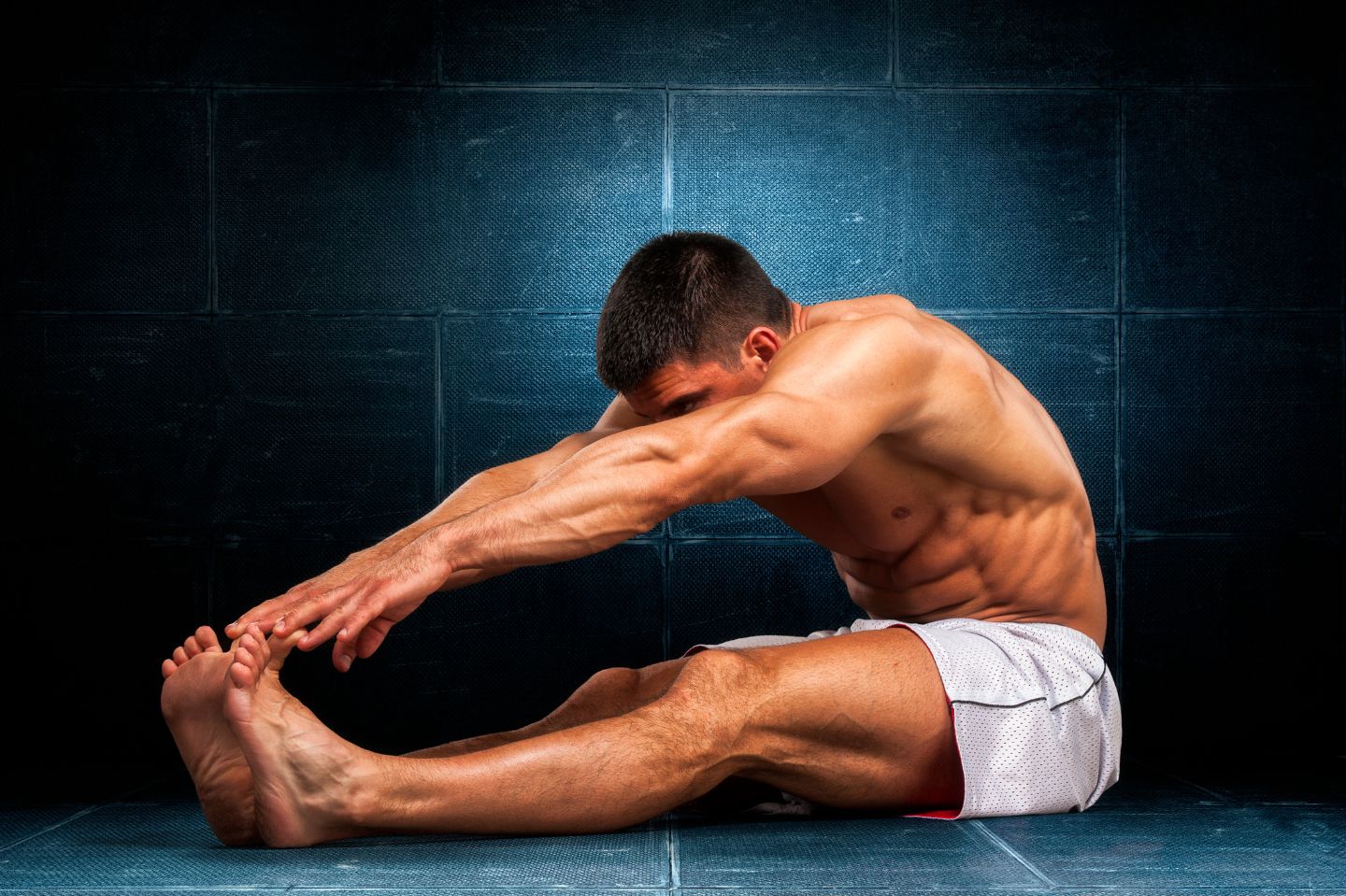
Feeling a little stiff? This morning stretch routine will rejuvenate your body and leave you feeling brand new!
The modern lifestyle often leads to stiff joints and muscles, especially with prolonged periods of sitting and sedentary activities like computer work or driving.
This sedentary posture can result in stiffness, weak muscles, and joint pain, impacting performance in sports and daily activities.
Fortunately, overcoming the effects of prolonged sitting doesn’t require much time or effort. Just dedicating 10 minutes to a daily stretching program can help keep your body flexible and strong.
In this article, we’ll explore a total body stretching program that takes no more than 10 minutes a day, ensuring your long-term health and vitality.
You’ll also like:
- The Only Bodyweight Exercises You’ll Ever Need to Get In Shape, Says a PT
- 10 Best Stretching Exercises To Make You as Flexible as a Cat in 4 Short Weeks
7 Best Morning Stretches for Men
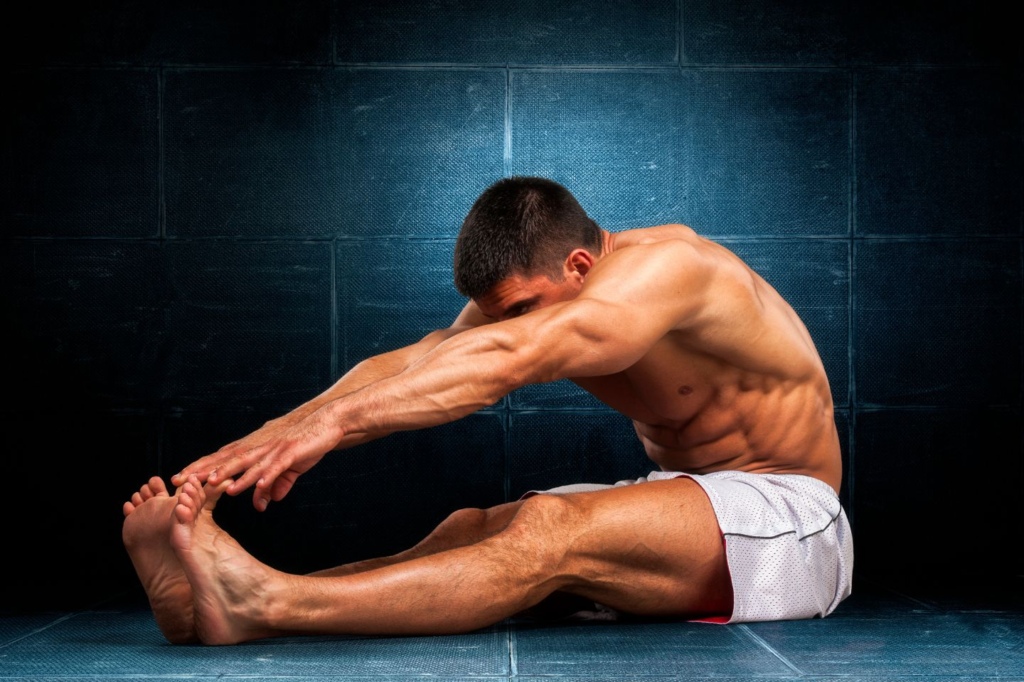
If you have any pain with these movements, seek help from a qualified medical practitioner. But if you feel good when performing the stretches, aim to complete this whole series once per day. Hold each pose for 30 seconds during these stretching sessions, 4 times per stretch (unless otherwise indicated).
Here are the best morning stretches for men!
1. Upward Dog
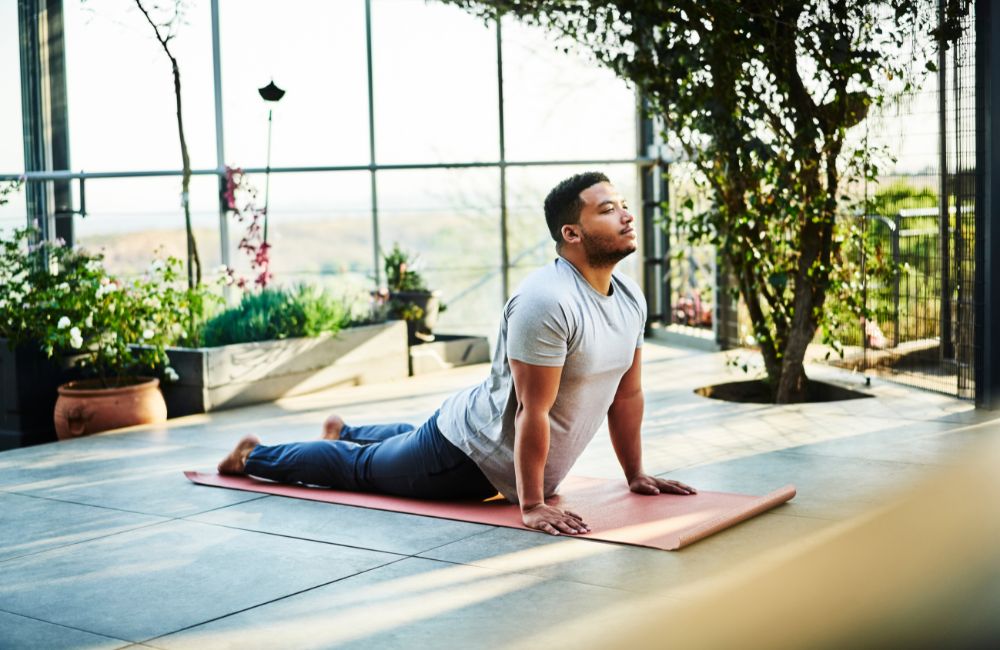
This yoga pose is incredible for spinal health. Upward dog counteracts the typical spine position seen during sitting. Therefore, it helps to increase the flexibility and mobility of your whole back.
How to Perform:
- Begin in pushup position with hands and toes on the ground.
- Allow your hips to dip down toward the ground while keeping your arms straight.
- At this point, your spine will be in extension. You should feel a good stretch in your abs and hip flexors.
2. Overhead Towel Stretch
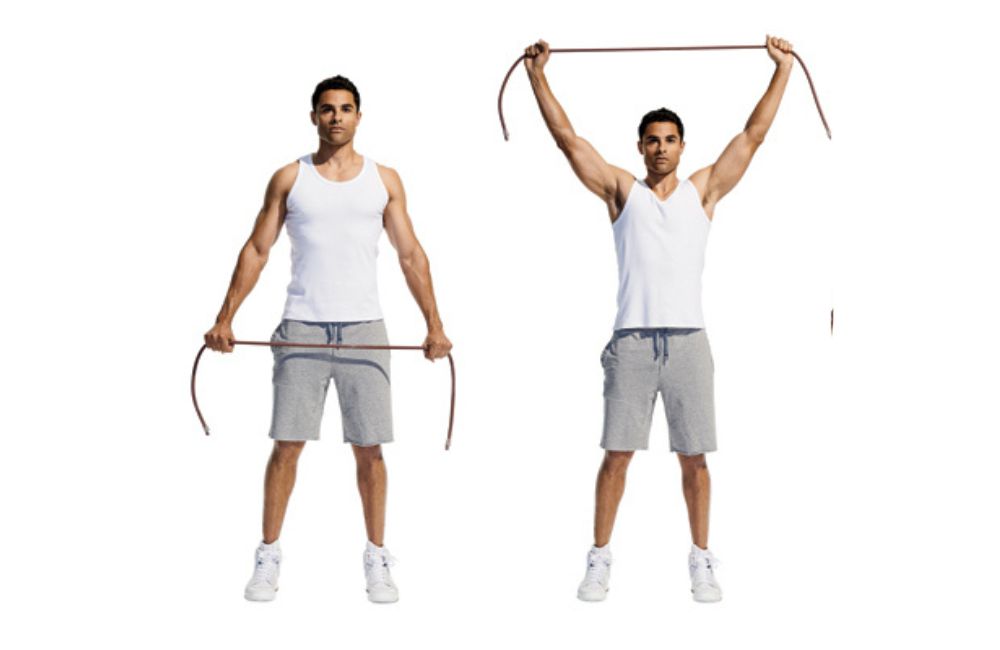
The overhead towel stretch opens up the chest and shoulders. This movement can be difficult for many people, and it may even be too intense to perform standing. Therefore, you can modify this stretch if needed, by completing it in a seated position. (You can also use a rope for this stretch).
How to Perform:
- Grasp a towel with both hands.
- Slowly, raise both arms (and the towel) above your head and as far back as you can.
- Extend your back and push your chest forward.
- You should feel a good pulling sensation in your chest and in the front of your shoulders.
3. Chest Stretch

If you were to nap during the day, you might clasp your hands behind your head so that you can rest on your palms. This is the idea behind the siesta stretch, and it may quickly become one of your favorites.
Just don’t fall asleep at work, or your boss might be very upset with you!
How to Perform:
- Sit or stand for this stretch
- Interlace your fingers behind your head.
- Lean back and open up your elbows as much as you can.
- This will serve to provide a significant stretch for your chest and shoulders.
4. Double Knee to Chest
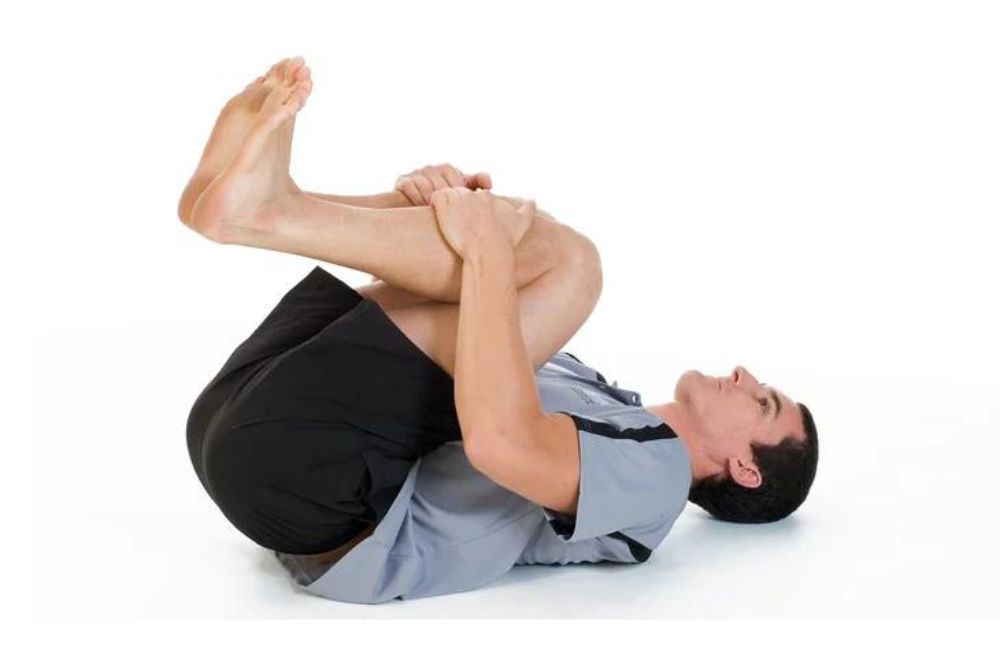
In physical therapy plans of care, the double knee-to-chest is a common stretch. This move is easy to perform and feels great. Just make sure you have a comfortable surface to lie on while you perform this stretch.
How to Perform
- Lie flat on your back, with your knees bent and your feet flat on the floor.
- Tuck both knees in toward your chest and hold your shin with both hands.
- Pull upward gently with your arms to increase the stretch.
- You should feel relief in your lower back and hips during this movement.
5. Windshield Wipers
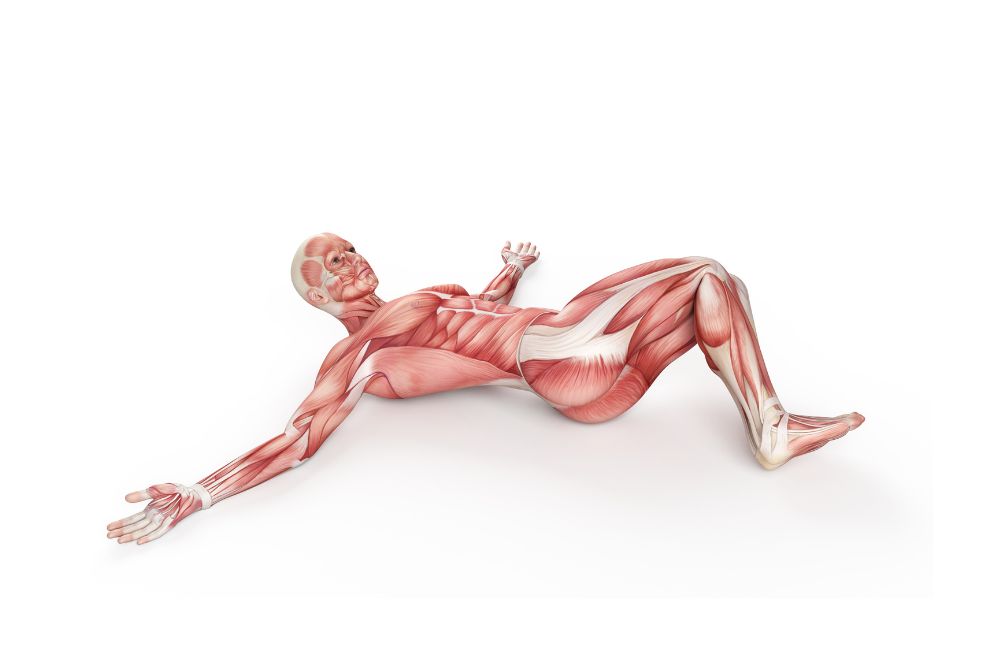
When you picture the windshield wipers of a car, you can easily envision their side-to-side motion. This is what you want to aim for as you complete this stretch. The windshield wiper move provides a gentle rotational stretch for your low back and hips.
How to Perform:
- Lie on your back with your feet flat on the floor and your knees bent.
- Slowly, without lifting up your left shoulder, allow your knees to fall toward the right side.
- Once you’ve gone as far as you can, hold the stretch for 5 seconds.
- Then, rotate your knees to the left side, keeping your right shoulder down, and hold for 5 seconds.
- Alternate between sides for 10 reps per session.
6. Cat-Camel
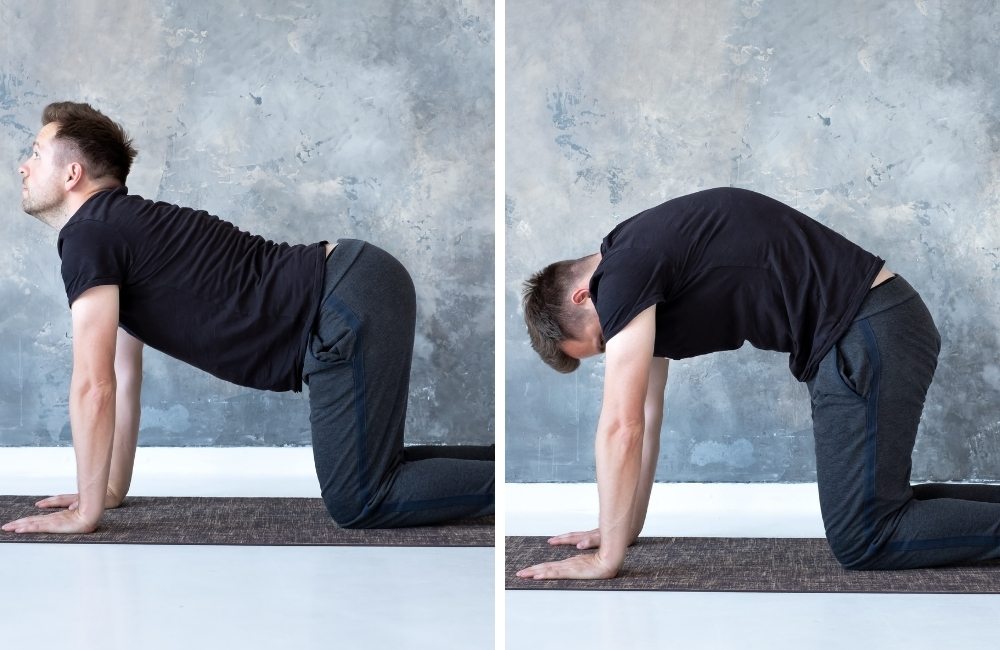
The upper back often stiffens up from sitting all day long.
One of the best ways to counteract upper back stiffness is the cat-camel stretch. This move is a classic yoga pose, much like the upward dog stretch, also described in this article.
How to Perform:
- Begin on hands and knees, with your hands directly below your shoulders and your knees directly below your hips.
- Allow your stomach to sag toward the floor as you lift your head up, looking forward.
- Hold this position for 10 seconds, then reverse the motion by arching your upper back and tucking your chin to your chest.
- Hold this position for 10 seconds and continue to alternate between these two poses for 10 reps per session.
7. Neck Circles
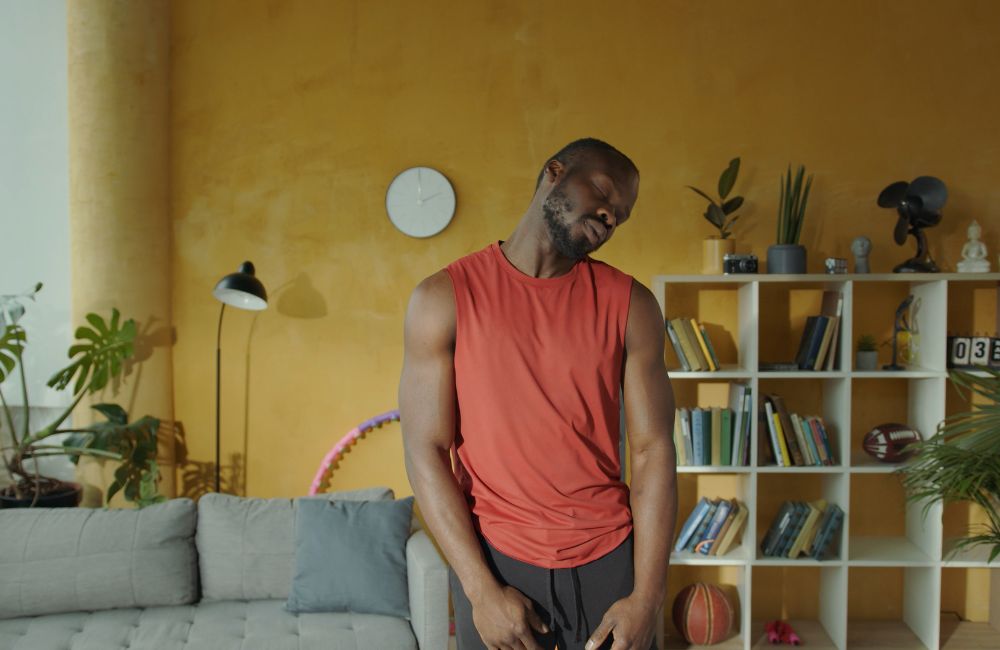
Last but not least, we have a stretch specifically for the neck muscles. This move should be performed gently and mindfully, ensuring that there is no pain or excess tension.
How to Perform:
- In standing or sitting, allow your chin to dip toward your chest.
- Then, roll your head in a clockwise motion for 10 reps.
- Next, roll your head in a counterclockwise motion for 10 reps.
- Repeat 10 circles in each direction for each stretching session.
Conclusion – The Best Morning Stretches for Men
If you’re looking for an easy, effective way to reduce stiffness and pain, these stretches are perfect!
Try this routine out and watch your mobility improve significantly! Which one of these morning stretches for men is your favorite stretch to perform? Let us know in the comment below.
Works Cited
- Jung, K. S., Jung, J. H., In, T. S., & Cho, H. Y. (2020). Effects of Prolonged Sitting with Slumped Posture on Trunk Muscular Fatigue in Adolescents with and without Chronic Lower Back Pain. Medicina (Kaunas, Lithuania), 57(1), 3. https://doi.org/10.3390/medicina57010003
- Owen, N., Healy, G. N., Matthews, C. E., & Dunstan, D. W. (2010). Too much sitting: the population health science of sedentary behavior. Exercise and sport sciences reviews, 38(3), 105–113. https://doi.org/10.1097/JES.0b013e3181e373a2


